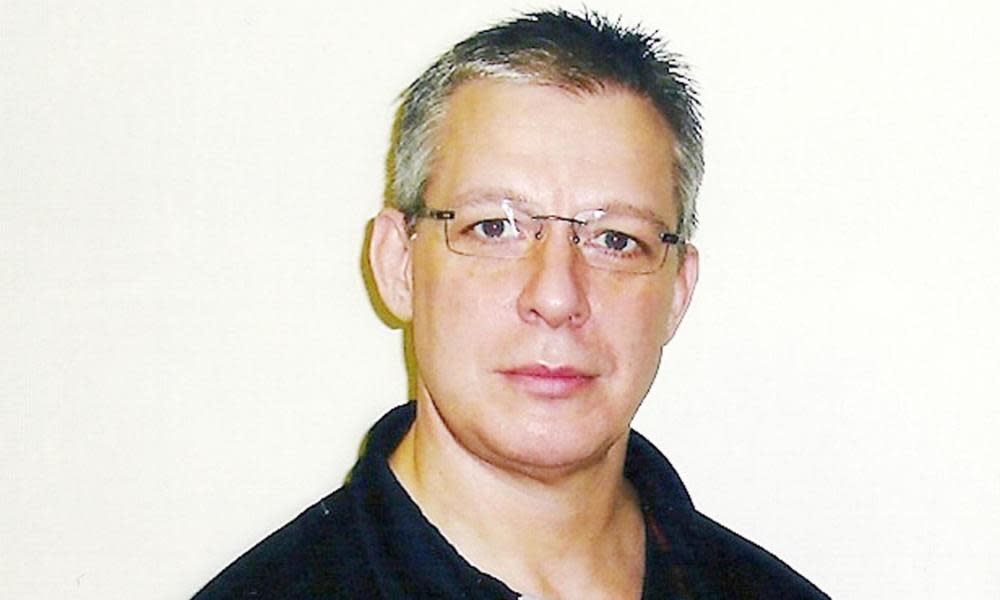Jeremy Bamber refused access to documents on Essex family murders

Jeremy Bamber, who is serving a whole life sentence for one of Britain’s most notorious multiple murders, has been refused access to documents that he believes could help clear his name.
Mr Justice Knowles upheld an earlier high court decision in January that backed the Crown Prosecution Service’s refusal to grant Bamber’s request for post-conviction disclosure of items relating to the possible existence of a second silencer found at the at White House farm in Essex where the murders took place in 1985.
In his judgment, delivered a week after the hearing held on Skype at Leeds administrative court, Knowles said: “I am unable to say that the CPS erred in law in refusing to make the disclosure sought.”
However, the judge provided hope to Bamber in his quest to clear his name and ruled that new evidence in the case could be used to make fresh submissions to the Criminal Cases Review Commission (CCRC). He said: “This does not leave the claimant without a remedy. Much work has already been done and he has the makings of a fresh submission to the CCRC including an unqualified report from Mr Boyce [a ballistics expert] in support of his case that there was a second moderator recovered from the farm. That provides him with the necessary basis for arguing that his convictions are unsafe.”
Bamber’s adoptive parents, Nevill and June Bamber, were shot and killed inside their farmhouse in Tolleshunt D’Arcy during the night of 6-7 August 1985, along with their adopted daughter, Sheila Caffell, and her six-year-old twin boys, Nicholas and Daniel. Bamber, then 24, had phoned the police to say his father had called him, saying Caffell had “gone crazy and has the gun”.
Initially, police believed Caffell had fired the shots then turned the gun on herself. But, on 10 August, after the police ended their examination of the crime scene, a relative of the Bamber parents, David Boutflour, found a silencer in the gun cupboard of the farmhouse. It was later said to contain blood belonging to Caffell.
The case turned on the silencer – the prosecution argued it was impossible for Caffell to have shot herself with the silencer on because her arms were not long enough to pull the trigger, and therefore the killer was Bamber. Noone else was under suspicion.
On 7 September 1985, Bamber’s ex-girlfriend told police he had discussed killing his family with her and that he was involved. On 29 September 1985 Bamber was charged with the murders.
At the end of the trial in October the following year, the jury was sent out to reach a verdict, but returned to ask the judge for clarification on the silencer and blood evidence. The judge said it contained only Caffell’s blood. The jury convicted Bamber by a 10 to two majority.
At last week’s hearing the silencer again played a crucial role. In 2011, Bamber discovered that a week before the 1986 trial, the head of biology at Huntingdon Forensic Science Laboratories wrote to Essex police saying the blood on the silencer “could have come from Sheila Caffell or Robert Boutflour”, another relative. That letter was not disclosed to the jury.
Robert Boutflour, now dead, gave evidence for the prosecution. He was a regular visitor to White House farm and had used the guns kept there for shooting.
In 2019 a peer-reviewed report compiled by Boyce was sent to the CPS about the possibility that there had been more than one silencer. Boyce concluded that, based on differing groove patterns, sizes and exhibit numbers, “at least two sound moderators had been examined in this case”. He said access to the actual original case documents could provide more detail.
Joe Stone QC, representing Bamber, argued that the existence of a second silencer could “have undermined the conclusion reached by the jury” and “put a wholly different complexion on the prosecution case”.
The CPS argued that Bamber’s legal team was engaged in a “fishing exercise”. Annabel Darlow, representing the crown, said : “It doesn’t matter if 40 sound moderators were found at the property. The only significance of the sound moderator is that it had blood type matching to Sheila Caffell deep within the baffles.”
However, the judge added in his ruling: “If ever there was a case where the CCRC should be approached to make a decision on what is said to be new evidence, it is this one. This is a massively complex case which has been investigated and re-investigated by more than one police force over some 35 years. The body of material is vast. After so many years, and so much litigation, the CCRC is the body undoubtedly best placed to consider the claimant’s arguments.”
Speaking from Wakefield prison, Bamber said: “The fight will continue and my substantial and compelling submissions will be made to the CCRC as soon as possible. We know that ultimately, disclosure of the material or not, we will win and I will be freed.”

 Yahoo News
Yahoo News 
